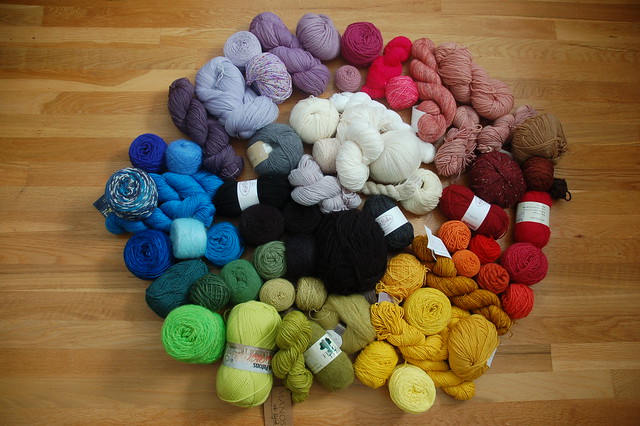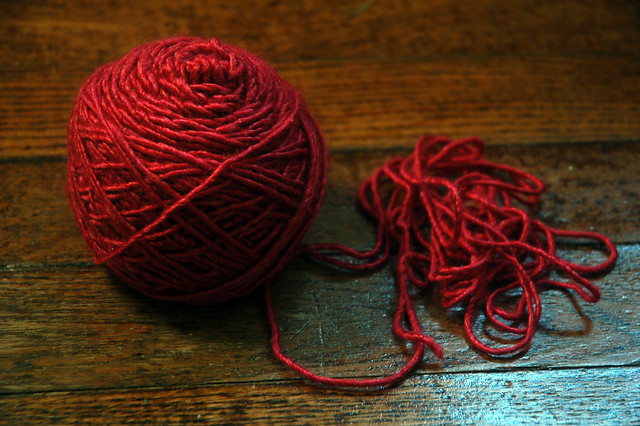Finally!

I present the first installment of my project
Made in America: From Fiber to Fabric
Yarn
The Beginning-ish
All textiles knitted, woven or felted begin with one thing: yarn.
This first part of my project is to learn about yarn.
Over the course of four days I traveled through New Hampshire, Massachusetts and Vermont to visit and talk with people who know all about yarn.
Let me tell you a little bit more about my project:
While sitting in my Systems Ecology lecture about Globalization my ADD caught up with me. As my mind wandered off to the world of lace, hounds-tooth, cashmere and sleeping on clouds of fluffy skeins of yarn, it dawned on me to consider where exactly all the bags and drawers of yarn my hoarding genes have led me to accumulate over the measly four years I have been knitting come from. How far do my fiberful indulgences travel before I can whip something up on my needles and mail it off to a friend. And at what (the environment?) and who's (child labors in China?) expense am I able to indulge in this warming hobby?
After class I proceeded to race home and read some yarn labels. I discovered this: majority of the yarns in my stash hail from two places, Italy and Peru. (But, as of late I learned that labels only list where the yarn is spun not necessarily where the raw fiber is from).

With the booming movement for local foods and the push to move away from factory farms and mono-cultured agribusiness this got me thinking about domestic sheep farms. Which led to one big question, with the countries ever growing demand for meat, what is happening to all the wool?
Hopefully most people understand that wool is a nautral bi/waste product from sheep. (And I should note that not all sheep meant for eating produce good wool for spinning...) But granted, there are millions of sheep slaughtered in the country each year producing thousands of kilos of wool, yet there are only a handful of mills and American sourced knitting and weaving yarns available.
Why?
A bunch of forms and paperwork later, this project was born. As I continue my research there are many different pieces to this project both from the production of textiles (agriculture, spinning, milling) and social/economical/environmental concerns. I hope to continue this project for the rest of my life working with producers and consumers alike to bring economic and environmental sustainable practices to an industry with so much potential.


No comments:
Post a Comment